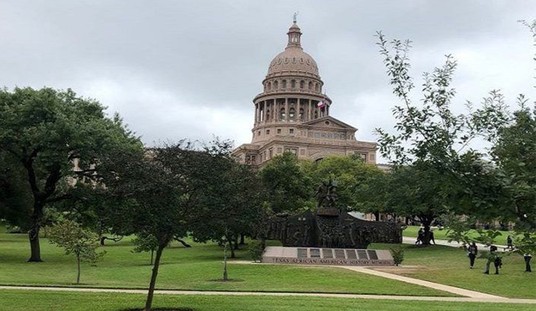Yesterday, we observed the unique spectacle of a socialist president threatening to veto any bill that reinstates higher levels of spending. Did Obama just experience an epiphany?
No. We are merely talking about cuts in defense spending. Those are the good kind of cuts.
Throughout the entire supercommittee imbroglio, whenever Democrats or members of the media referred to spending cuts – to the extent that they exist – they were referring to baseline cuts. In other words, the cuts in discretionary spending will still enable the spending levels to rise each subsequent year, albeit at a slower pace. Welfare and entitlement spending is exempt from all cuts, even baseline reductions. Defense, on the other hand, will actually incur real reductions in ‘actual dollar’ spending in subsequent years.

Actual reductions in spending, even from the previous year, are considered unprecedented in Washington. Yet, under the proposed sequestration gutting of the military, defense spending in FY 2017 will be lower than that of FY 2011. If we factor in inflation, defense spending will not reach current levels again until sometime outside of the 10-year budget frame. If we peg defense spending to our GDP, we will never recover the 45-year average of 5.2%, even if we factor in all of the war spending. Our total defense spending for FY 2011, including base budget and war supplemental was roughly $700 billion, or 4.7% of GDP.
Even Obama’s Secretary of Defense Leon Panetta warned that under sequestration, our military will have “[t]he smallest ground forces since 1940”, “a fleet of fewer than 230 ships, the smallest level since 1915”, and “[t]he smallest tactical fighter force in the history of the Air Force.” Panetta described these cuts to Lindsey Graham as tantamount to “shooting ourselves in the head.”
Keep in mind that all of these cuts are coming out of base defense spending, not war appropriations. So even under an Obama foreign policy, we will continue to engage in foreign military operations and commitments. Due to the impending defense cuts, in conjunction with an aging fleet of planes and ships, not only will our military be hamstrung by egregious rules of engagement and lack of actionable intelligence (no more interrogations), they will be forced to fight with cruddy weaponry.
The reason why defense will be hardest hit is because this vital function of government will suffer a double whammy onslaught in budget cuts. Defense has already absorbed half of the $917 billion in discretionary spending cuts ($465 billion including Robert Gates’s “efficiencies” savings) from the first tranche of the Budget Control Act. Now, defense is slated to absorb another $600 billion from sequestration. Remember that these spending reductions are coming off the heels of initial defense cuts under the Obama administration, even as every other facet of the budget had metastasized uncontrollably. Even though sequestration will affect some discretionary programs, almost all of the welfare and entitlement programs, which comprise 65% of the budget, will be exempt from any baseline reductions, let alone real dollar cuts. Over the next seven years, we will not spend an additional penny on defense, yet total federal and state welfare spending will increase 40%.

If we would budget the next 10 years of welfare spending in the same manner that we are treating defense spending, we would be close to solving our debt problem. Unfortunately, liberals only have an appetite to cut the few legitimate constitutional functions of government, while preserving all of the unconstitutional redistributive programs.
Sadly, as our public debt is slated to reach 252% of GDP by 2035 (June CBO report, page 32), we won’t have to worry about maintaining a military.
The best alternative for conservatives is to follow the Phil Gramm plan. Gramm, who is the original author of the old sequester process, advocates that the GOP offer an alternative to sequestration in 2013. Under the original Gramm-Rudman process, which was reinstated by the Budget Control Act, the majority leader in either house can offer an alternative plan to sequestration. That motion is considered privileged, and according to Gramm, “can be amended only with relevant amendments, debated for only 10 hours and can’t be filibustered.”
What should that alternative resolution include? Among other things, it absolutely must include repeal of Obamacare. This plan would kill three birds with one stone; satisfy the $1.2 trillion in automatic spending cuts, save the military, and most importantly, repeal Obamacare without sixty votes. It would be akin to political malpractice if Republicans fail to win back the Senate in 2012, given the lopsided political map this cycle. As such, Republicans must use this campaign season to reaffirm their promise to preserve the military and repeal Obamacare; two goals that resonate with the electorate.
If they really have the gumption to trigger such a process, perhaps the entire debt ceiling deal would have been worthwhile after all. The clock is already ticking.













Join the conversation as a VIP Member